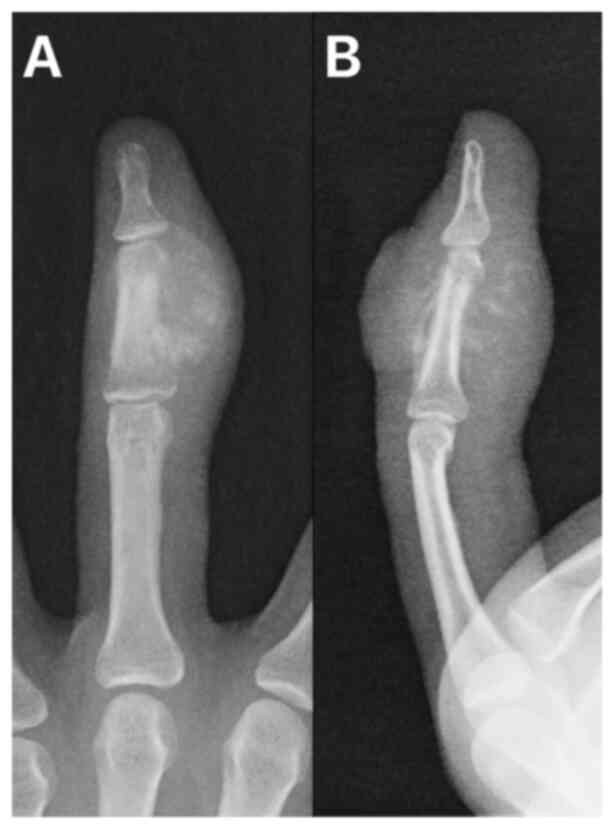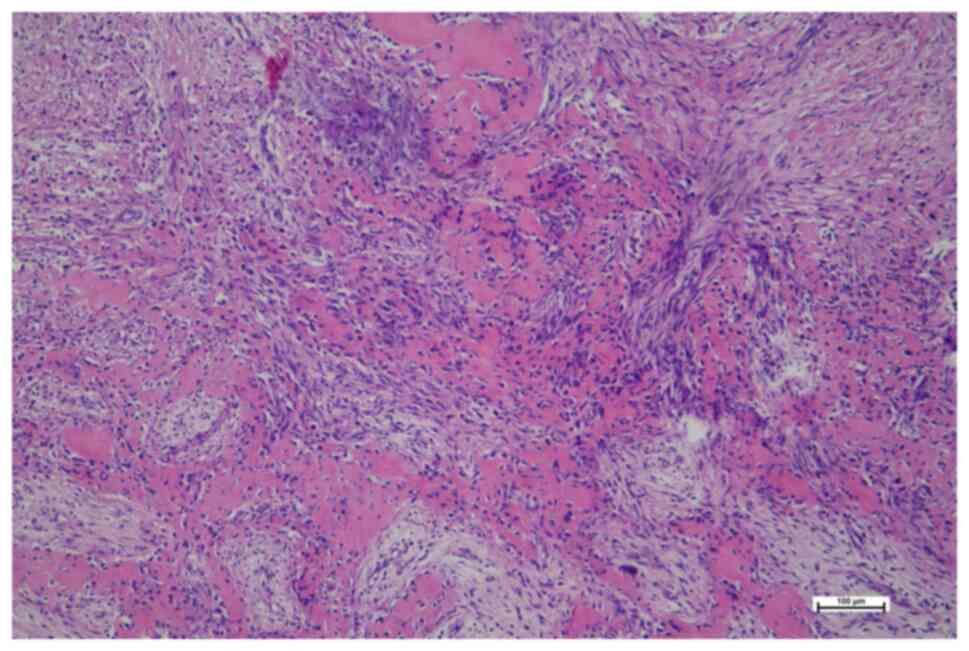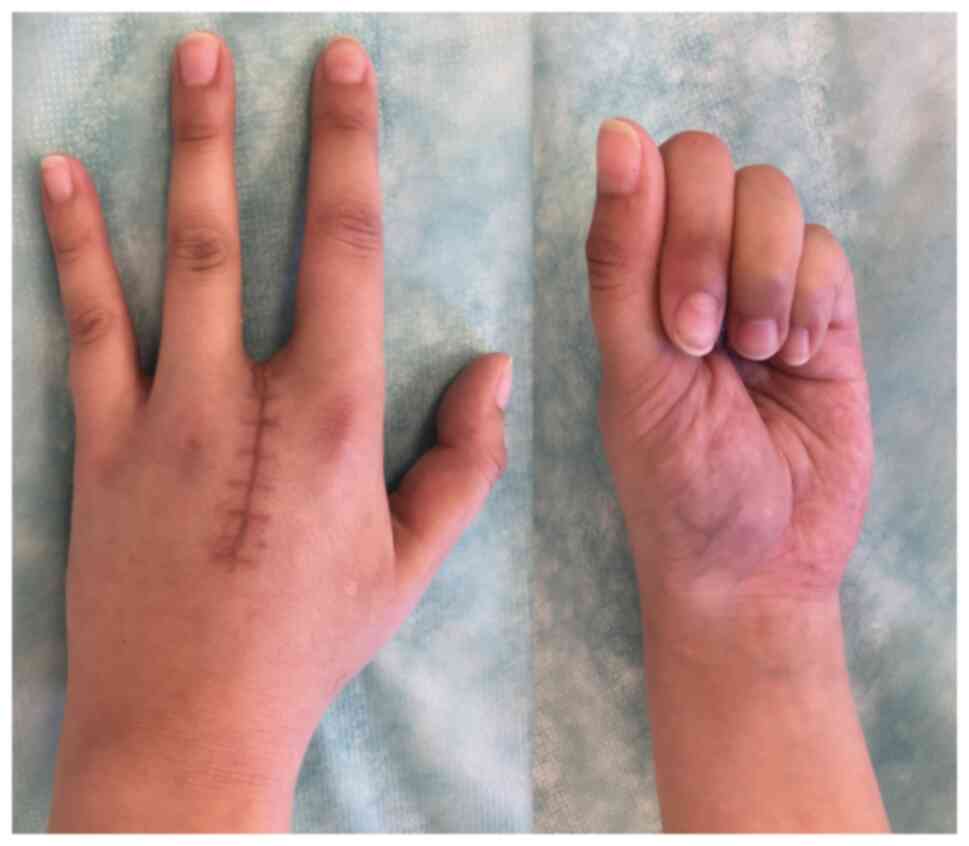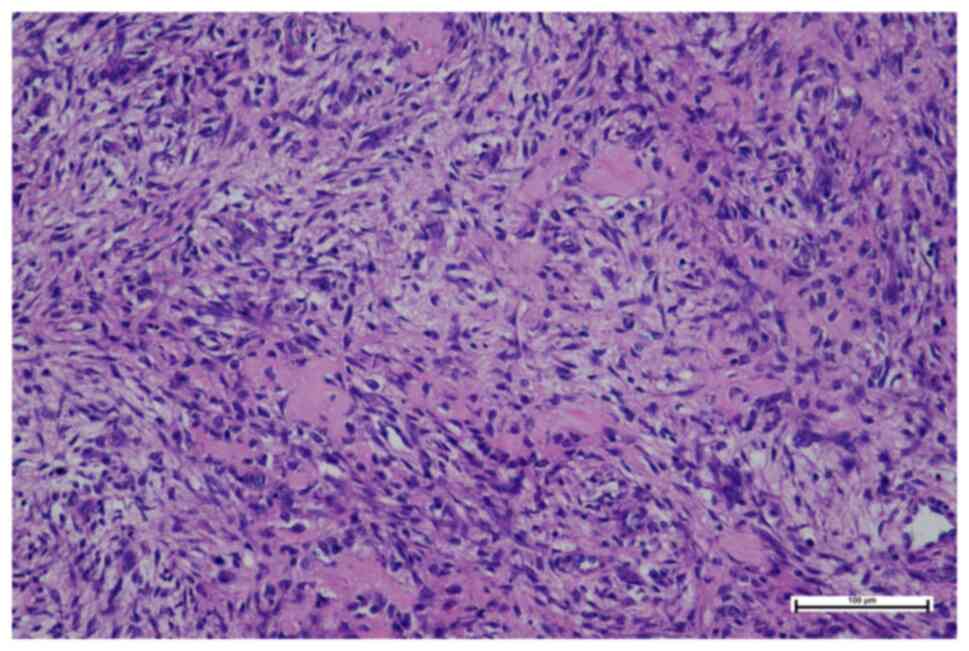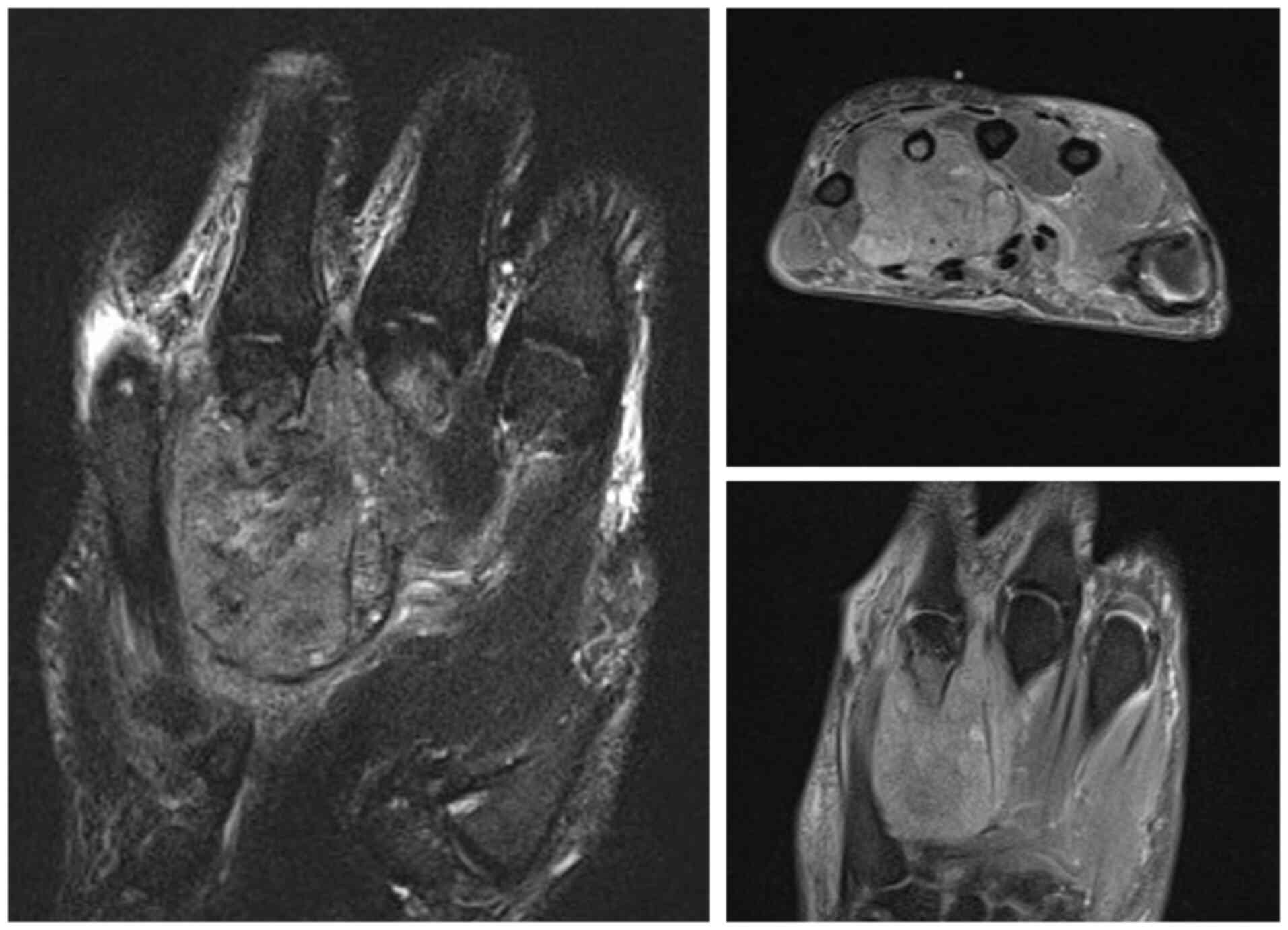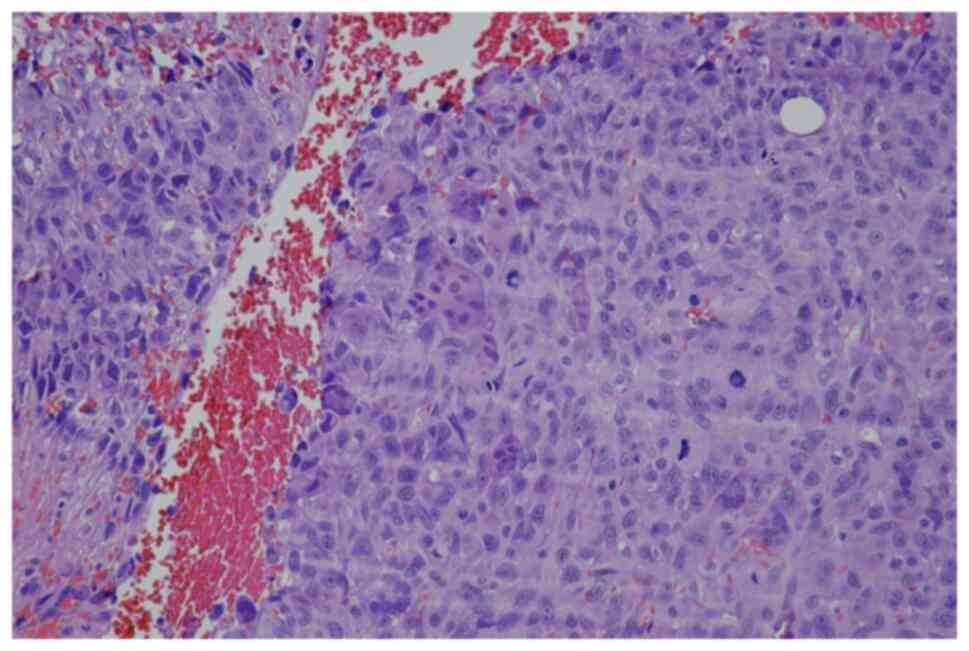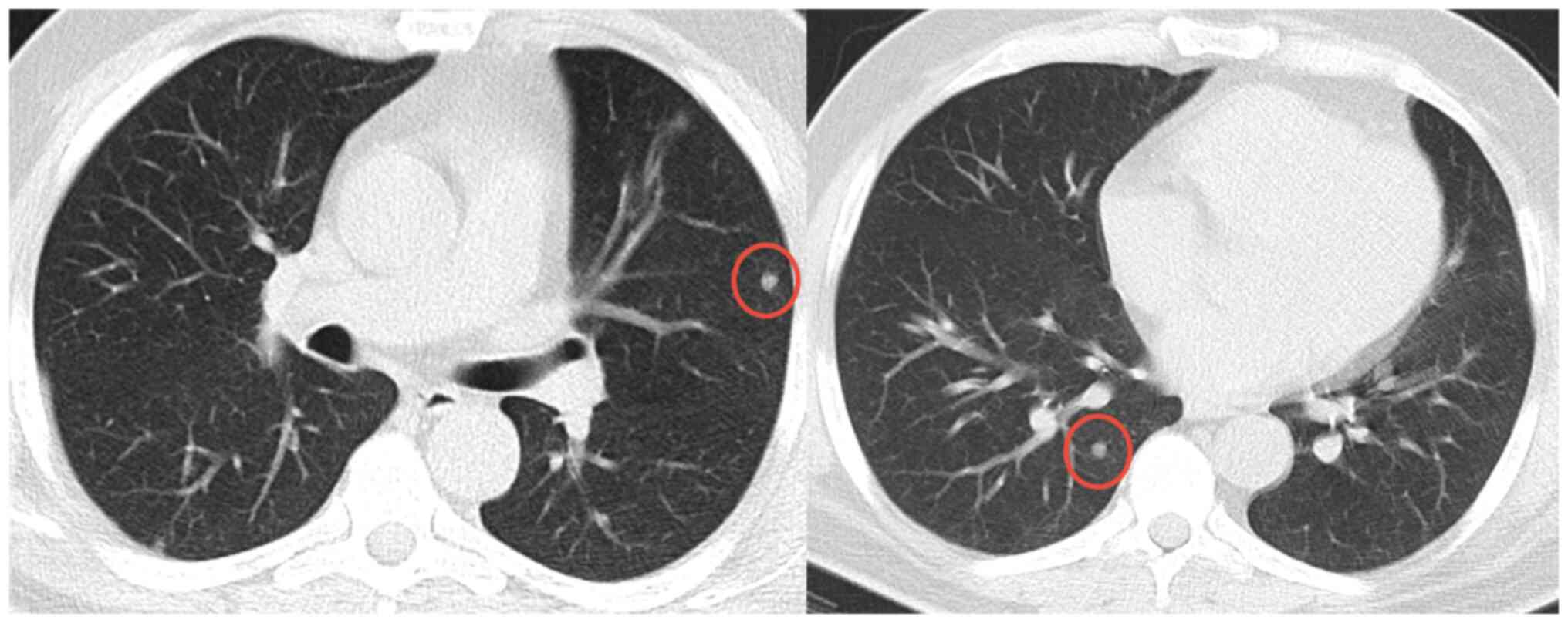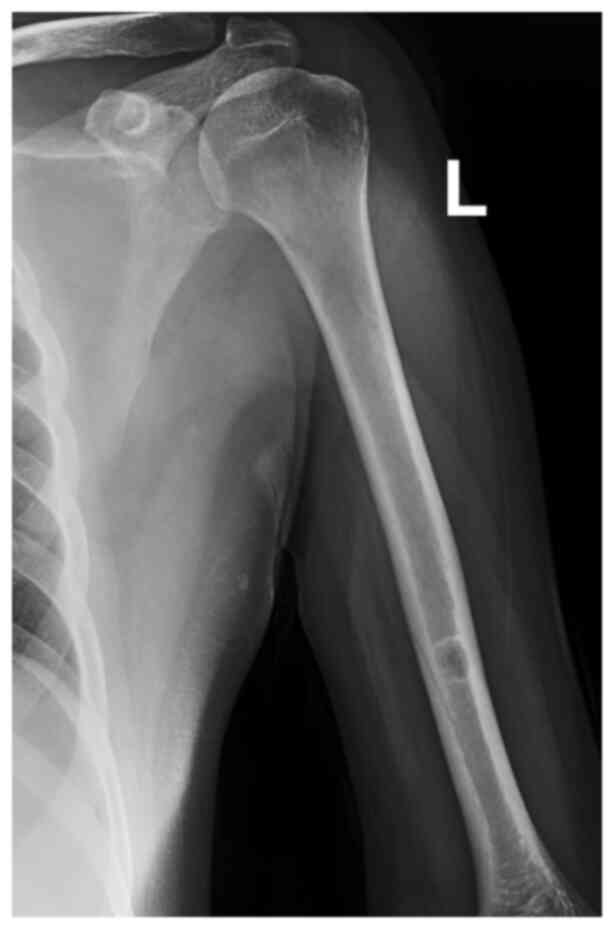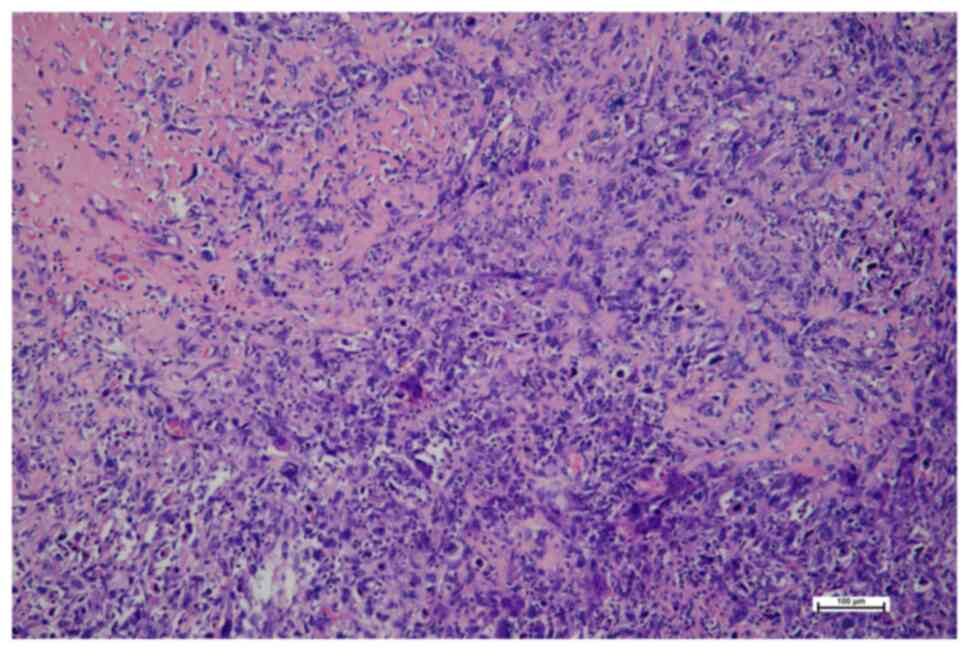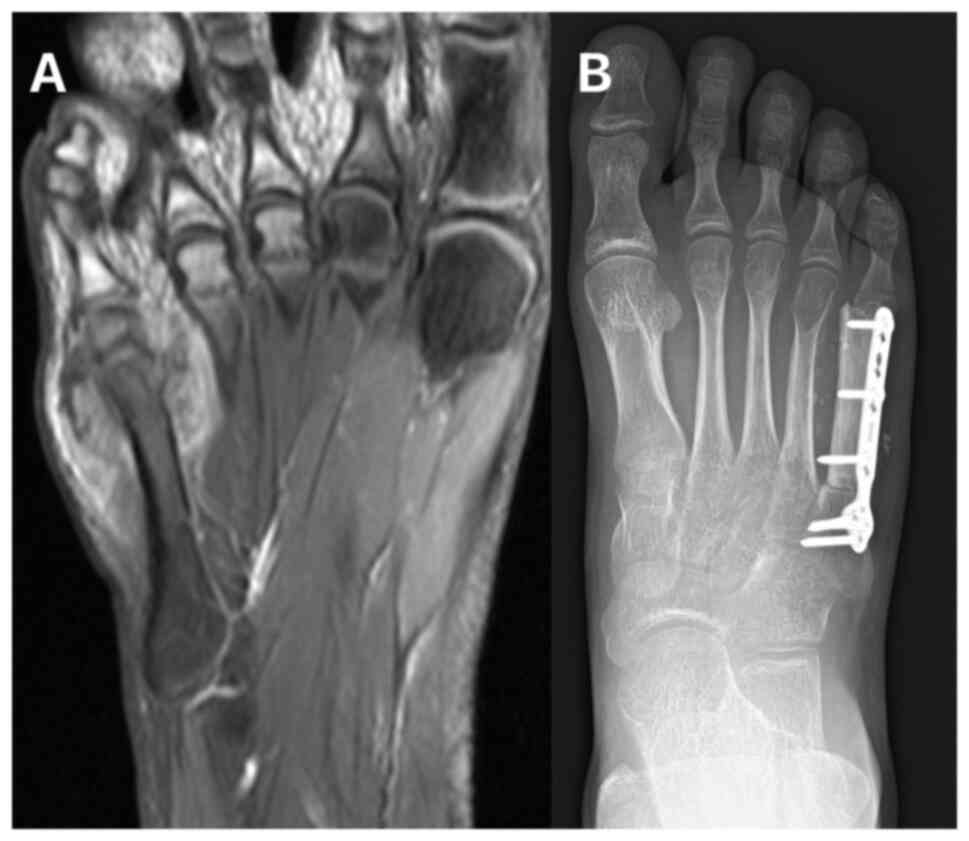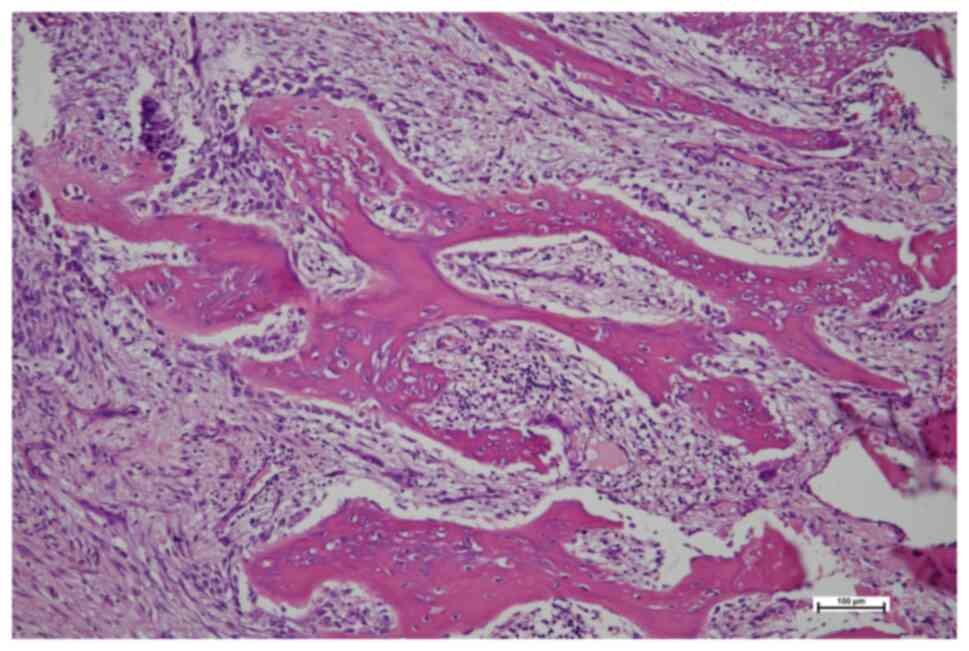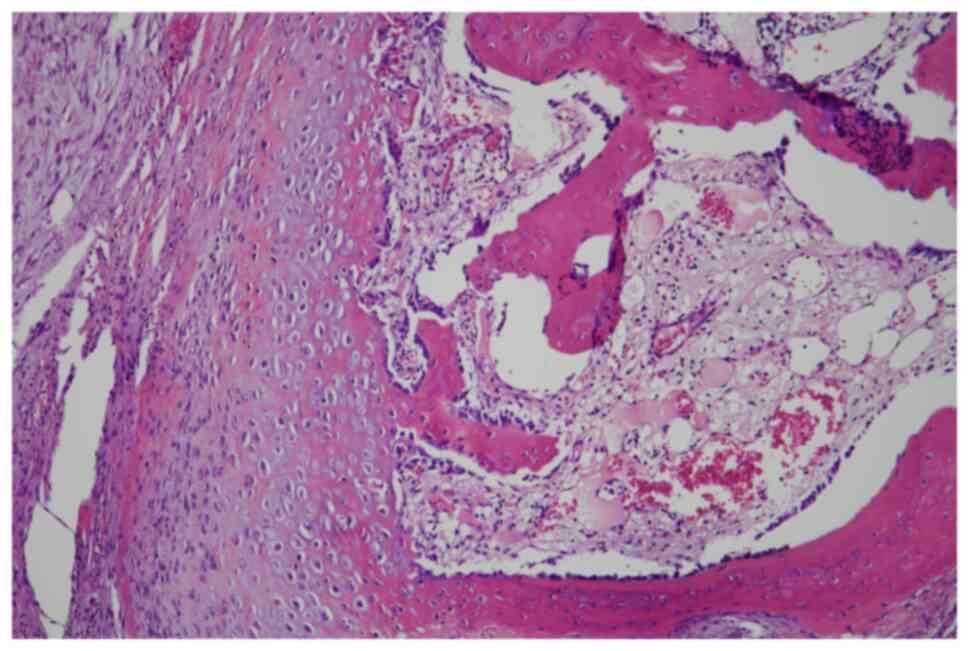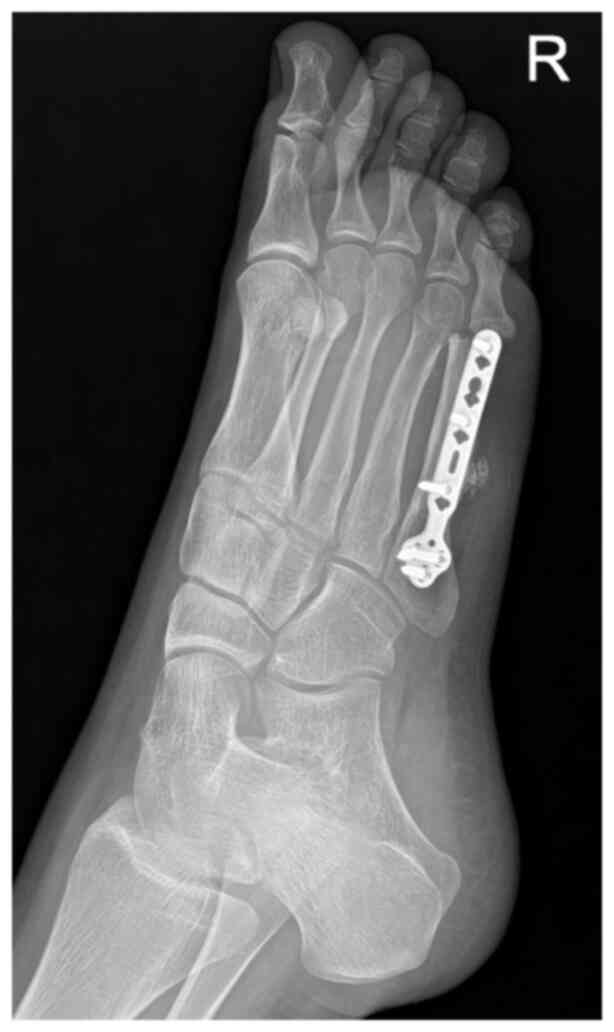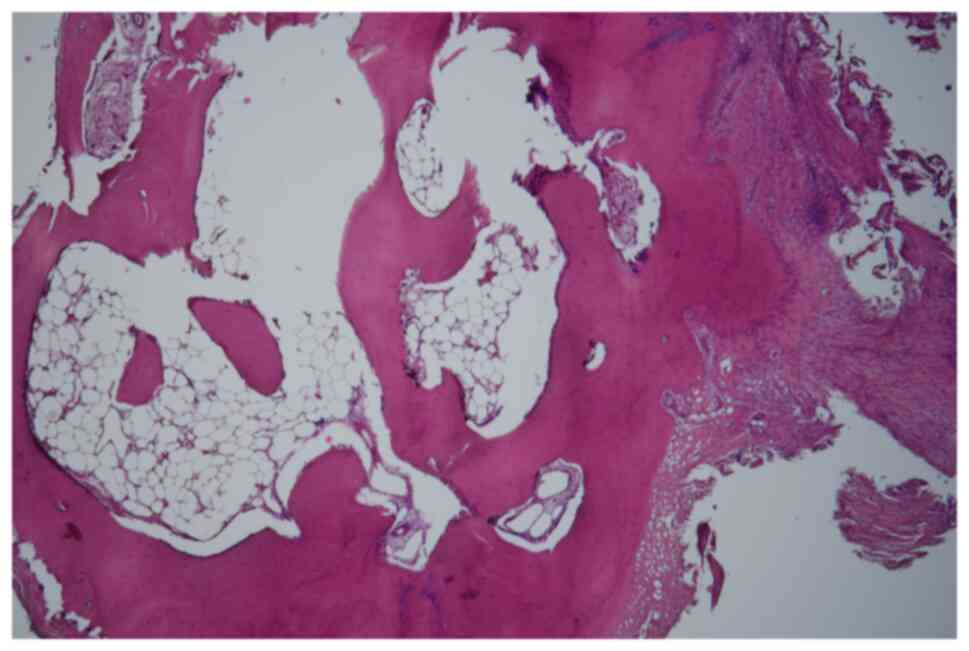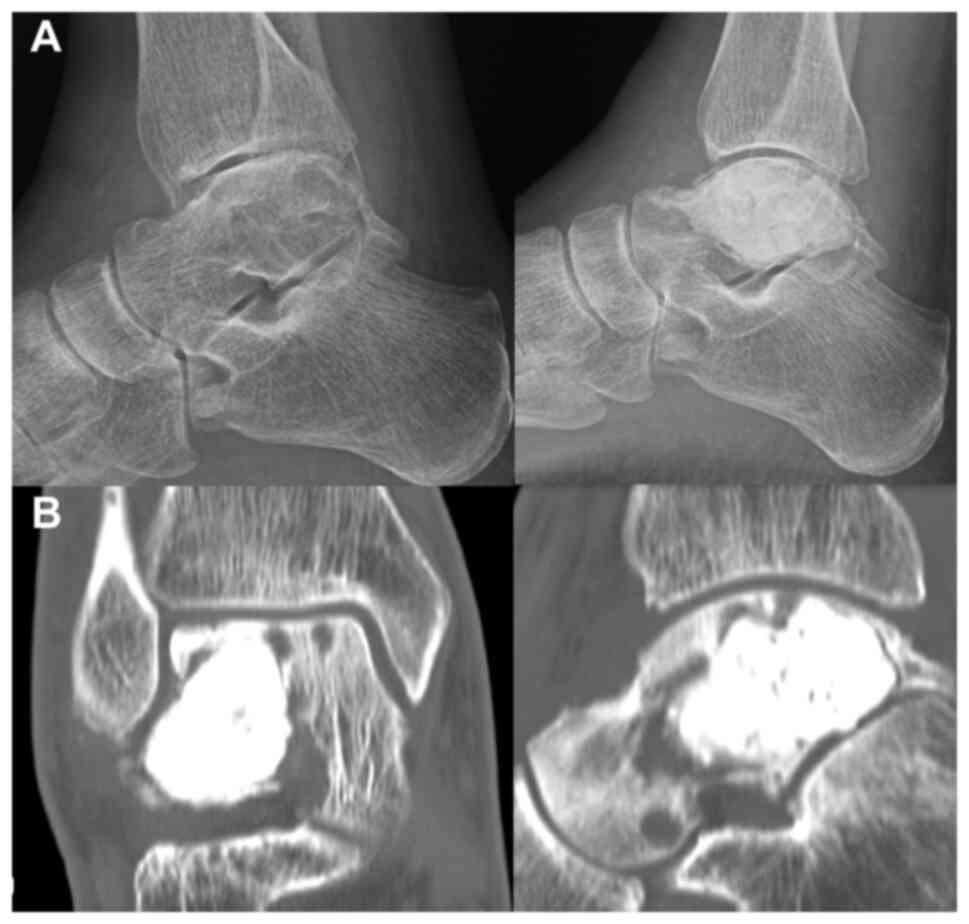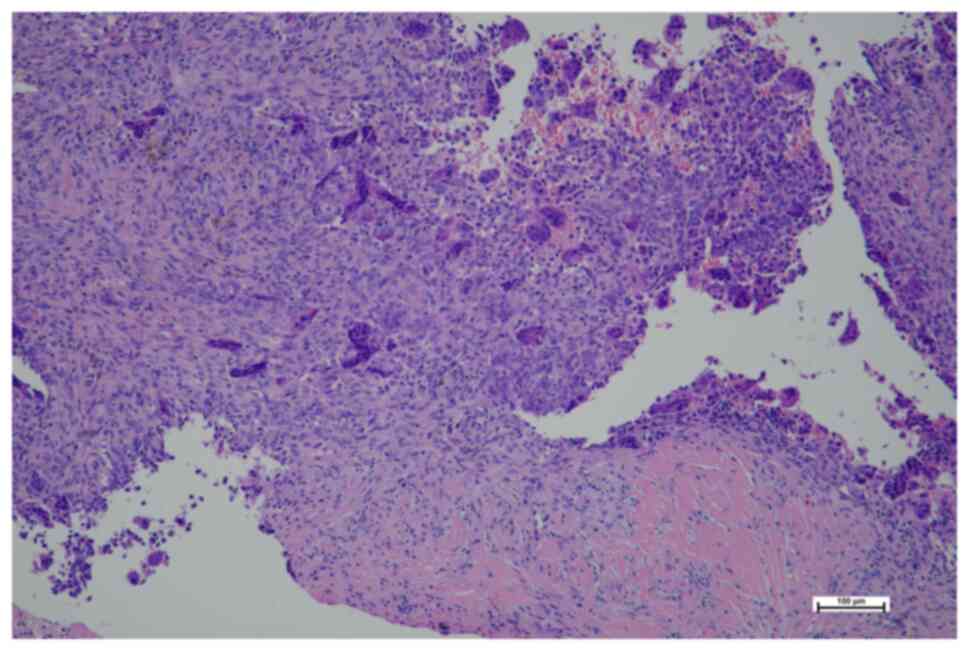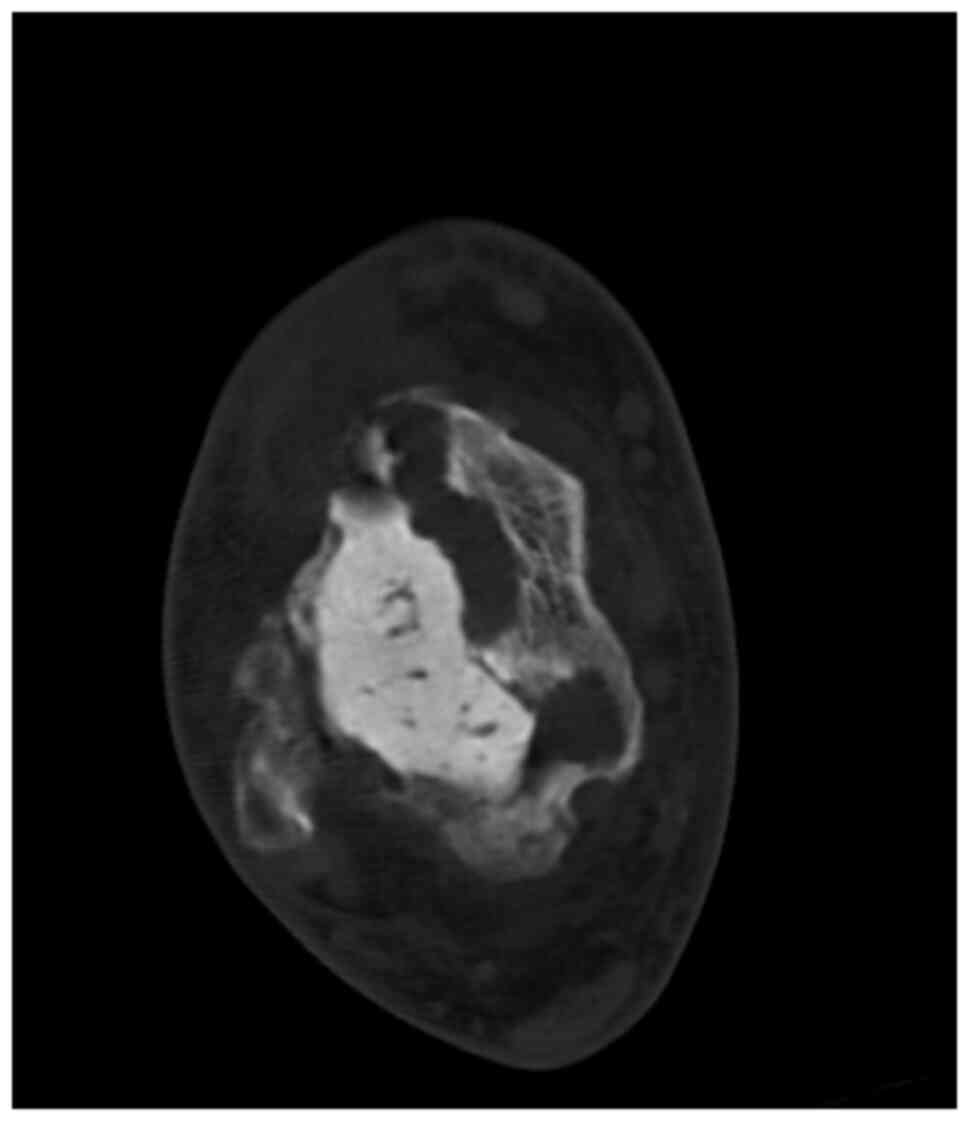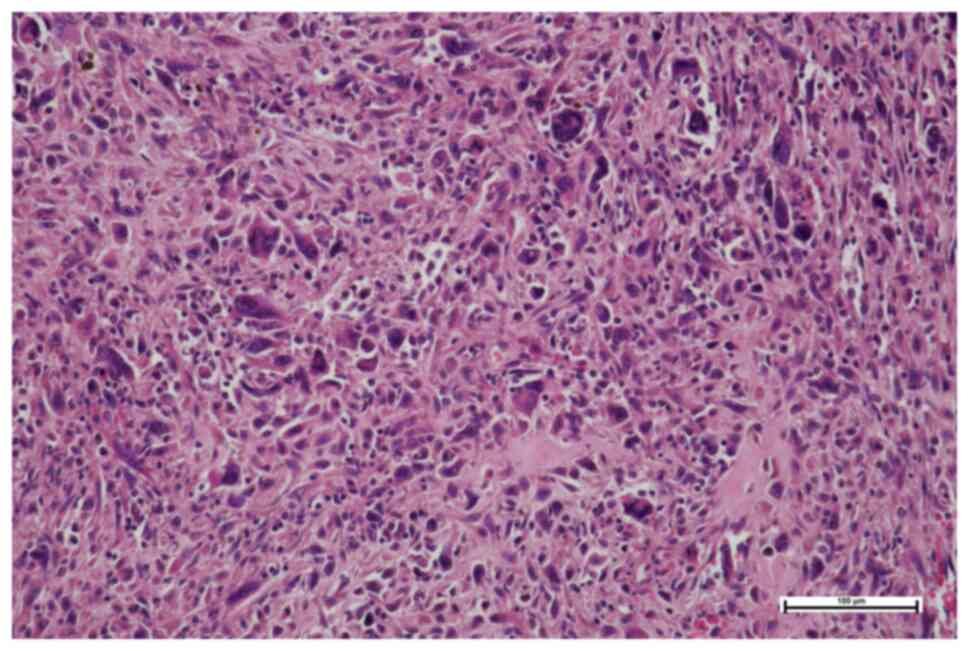Osteosarcomas of the hand and foot: A sarcoma‑center case series experience
- Authors:
- Published online on: November 12, 2024 https://doi.org/10.3892/ol.2024.14800
- Article Number: 54
-
Copyright: © Mahdal et al. This is an open access article distributed under the terms of Creative Commons Attribution License.
Metrics:
Total
Views: 0 (Spandidos Publications: | PMC Statistics:
)
Total PDF Downloads: 0 (Spandidos Publications: | PMC Statistics:
)
Abstract
Hand and foot osteosarcoma represents ~1% of all diagnosed cases of osteosarcoma. The rarity of osteosarcoma of the hand and foot leads to frequent misdiagnosis, delayed diagnosis or incorrect treatments, which can lead to fatal consequences. Typically, salvaging the affected limb is the treatment of choice, and with the use of chemotherapy, 60‑65% of patients with osteosarcoma can be treated without amputation. Due to its rarity, misdiagnosis and treatment delays are common, yet detailed reviews and analyses of such cases are limited. The present retrospective cohort study aimed to review and analyze cases of osteosarcoma located in the hand and foot. From January 2007 to January 2019, 11 patients were treated at the Masaryk Memorial Cancer Institute Sarcoma Center (Brno, Czechia), 5 cases affected the hand and 6 affected the foot. A total of 6 male patients and 5 female patients, with a mean age of 30.9±16.74 years, were diagnosed with hand or foot osteosarcoma. The mean follow‑up period was 90.36±66.14 months. The mean tumor size detected during diagnosis was 4.29±1.81 cm. Osteoblastic osteosarcoma was the most common histopathological type, accounting for 4 cases (33.4%). A majority of the osteosarcomas were identified as high grade (81.8%). A total of 5 patients experienced misdiagnoses following their initial biopsy, with 2 patients initially receiving treatment outside the Masaryk Memorial Cancer Institute Sarcoma Center. The most frequently encountered misdiagnosis was giant‑cell tumor of the bone. A total of 3 patients underwent limb amputation and 2 patients developed lung metastasis and succumbed to the disease. The disease‑free survival period and overall survival rate were calculated using Kaplan‑Meier survival analysis. The mean disease‑free survival period was 82.83±60.05 months, while the overall survival rate was 72%, with a mean survival time of 90.36±56.73 months. In summary, an examination of a case series involving 11 patients diagnosed with osteosarcoma of the hand and foot was conducted. The treatment approach, clinical characteristics and patient outcomes were described. A total of four case studies of patients with osteosarcoma in the hand or foot were presented. Misdiagnosis of this disease may result in the inappropriate treatment being administered to patients, therefore, the correct and rapid diagnosis of disease is necessary for effective treatment of hand and foot osteosarcomas.




